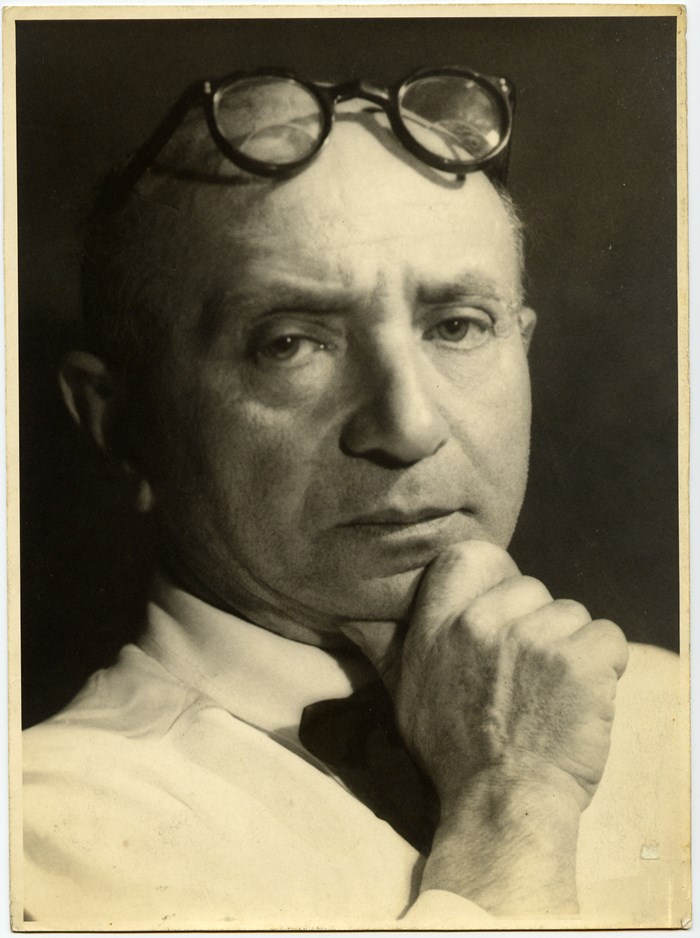
Aram Alban
died 1961
1910 - 1950s
Among the many Armenian photographers who worked in Egypt between 1880s and 1950s, the role of Aram Alban is of particular significance. Marked by remarkable individuality and talent, Alban left an undeniable trace on the history of photography in the Middle East and was a key figure in the formation of Egyptian and Armenian modernist photography.
Born to affluent, middle class parents, Alban had received a good education and was schooled in the arts and music. Fascinated by the camera in his teenage years, he became an apprentice to the Alexandria-based photographers Belian and Tachjian. By 1910 Alban was confident enough to open a studio of his own. Aware of the latest currents in European photography (Alban travelled there regularly), he successfully appropriated the soft-focus, glamorous style favored by German and French studio photographers. This approach to portraiture, which transported the sitter into the realm of performance and fantasy, proved to be enormously popular, ensuring Alban’s rapid rise to success.
Deciding that his talents could take him further than Egypt, he left the Alexandria studio to his assistant, Apkar Retian and moved to Europe in early 1920s. Initially opening a studio in Brussels, Alban established a branch in Paris only a few years later. Considering the huge competition, this achievement was nothing short of a triumph for the dwarfish-looking Armenian émigré. Fluent in at least four languages, an accomplished musician and a witty raconteur, Alban had no difficulty in attracting commissions from the world of fashion, theater, film and the nobility (Queens of Belgium and Egypt were among his regular clients).
Of the Armenian photographers working at the time, Alban was one of the very few who considered himself not simply a craftsman but an artist. Fully engaged with all aspects of modern culture, he, nevertheless, kept a sober outlook, gravitating towards a style that looked avant-garde while remaining remarkably classicist. During the 1930s he was particularly enamored of surrealism and utilized various experiments such as double exposures, solarization and disorienting cropping to create startling compositions. The use of shadows (often his own) was an especially favored device through which he could transform a benign looking space into a narrative pregnant with tension and drama. There was, however, a simplicity to his aesthetic which proved highly influential for the many photographers who were associated with him in some way. His inclusion in the famous 1935 anthology ‘Formes Nues’, which placed him next to Man Ray, Brassai, Dritkol, Kertesz, Moholy-Nagy and Dora Maar, consolidated his stature as a truly international master.
But age and the advent of WWII forced Alban to return to the relative tranquility and comfort of Alexandria in 1940. Not wishing to compete with Apkar Retian, Alban decided to relocate his business to Cairo. The edgy, sensual and erotically charged brand of modernism that he had developed in Europe immediately began to affect the works of his local, mainly Armenian competitors. It is from Alban that photographers such as Van Leo, Angelo and Armand drew their flamboyant styles. When one of Alban’s younger disciples, Andranik Kochar, moved to Soviet Armenia in 1946, he brought with him the Egyptian master’s stylistic threads, thus radically transforming the artistically drab photographic context of Soviet Armenia.
Alban’s role in developing what came to be known as the ‘Cairo’ school of photography cannot be underestimated. As a mentor of numerous diasporan Armenian practitioners he deserves to be known as one of the father figures in Armenian photography along with Abdullah Frères and Andranik Kochar. His oeuvre is exceptional in its celebration of the artistic potential of photography and its brilliant mélange of Eastern and European aesthetic sensibilities.
Nationality
Egyptian, Armenian
Region
Belgium, Egypt, Armenia, France
City
Constantinople (b.), Alexandria, Cairo, Paris, Brussels
Studio
Studio Alban
Activity
artistic, advertising, studio, documentary
Media
analogue photography
Bibliography
Maria Golia, Photography and Egypt, Reaktion books, London, 2010, pp95-101. Akram Zaatri, Portraits du Caire: Van Leo, Armand, Alban, Actes Sud, Beyrouth, 1999
Collections
American University of Cairo Arab Image Foundation, Beirut Lusadaran Armenian Photography Foundation, Yerevan Metropoliten Museum of Art, New York


















